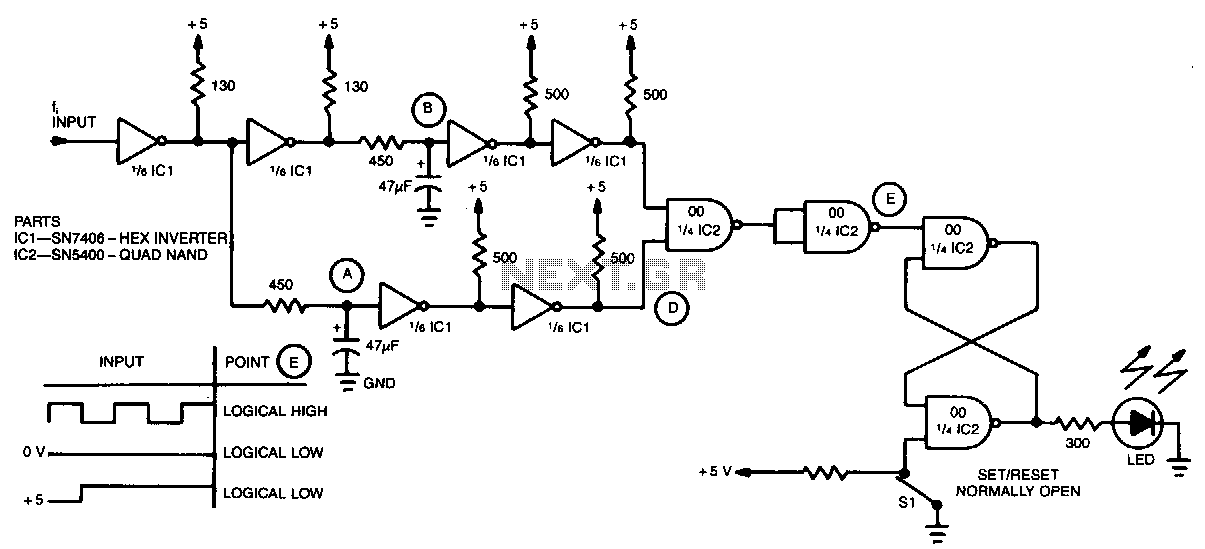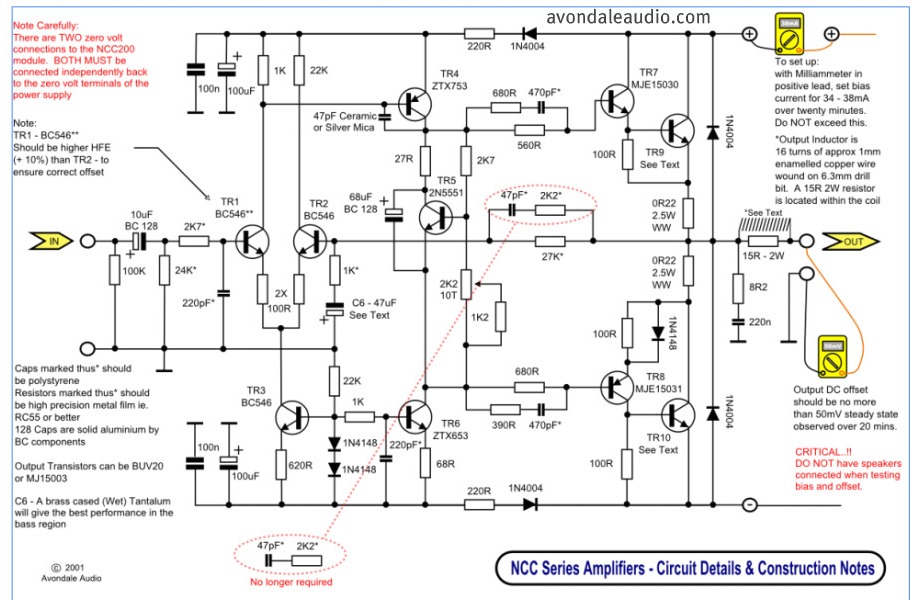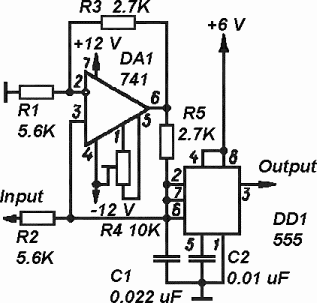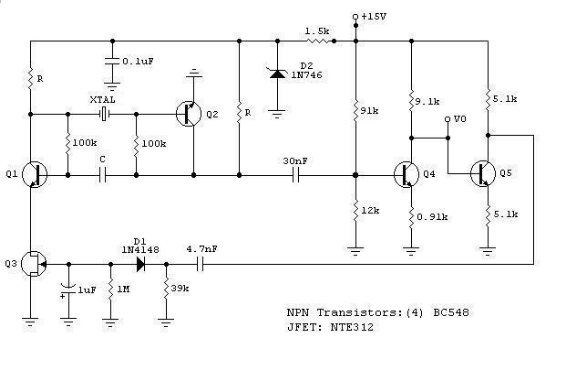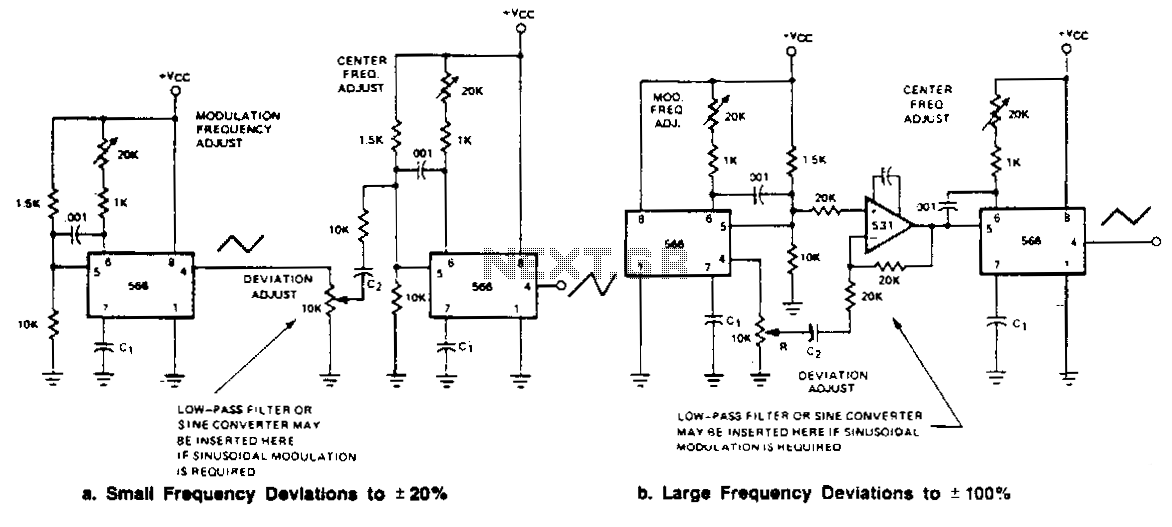
Frequency counter Divider schematic
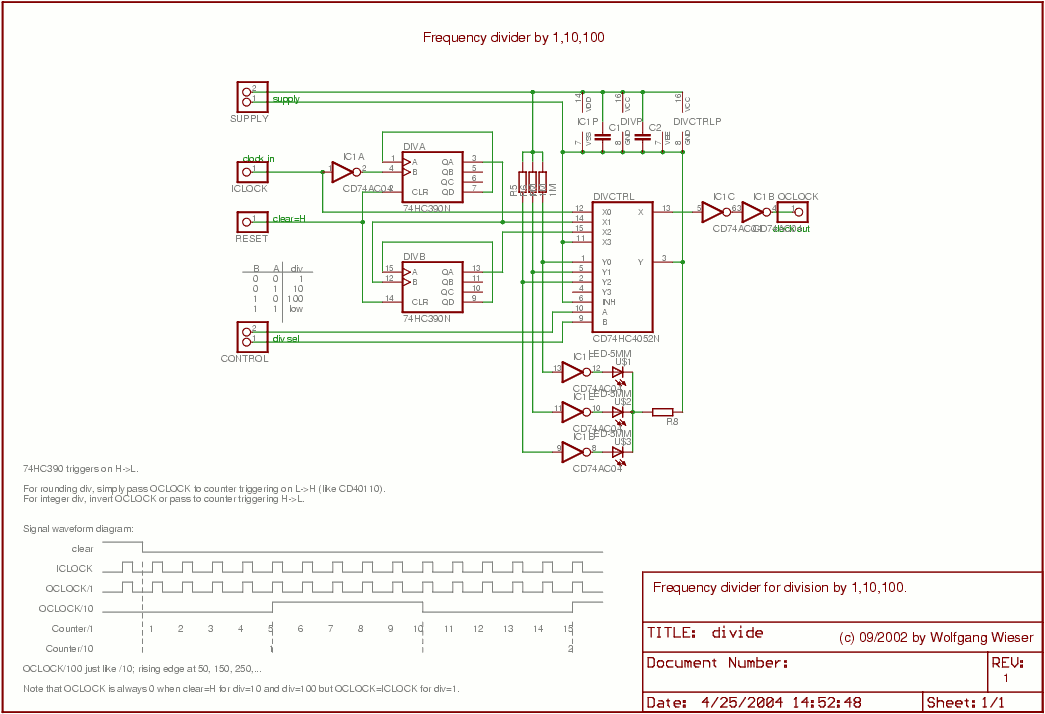
The divider design is straightforward. Users can select a division factor of 1, 10, or 100, or opt for no output (tied low) through the CONTROL input connected to the analog multiplexer HC4052. The design utilizes AC04 to drive three indication LEDs and buffer the signal. A single HC390 contains two dividers, capable of dividing by 2 and 5, which can be combined to function as two dividers by 10.
The divider circuit employs the HC4052 analog multiplexer, which allows for the selection of different division factors based on the CONTROL input. This configuration provides flexibility in signal processing, enabling the output to be adjusted according to the user's requirements. The HC4052 is a dual 4-channel multiplexer that can route analog signals, making it suitable for this application where the division factor needs to be selected dynamically.
The AC04 operational amplifier is utilized to drive three indication LEDs, which serve as visual indicators of the current division setting. This feature enhances user interaction by providing immediate feedback on the operational status of the divider circuit. The buffering capability of the AC04 ensures that the signal integrity is maintained, preventing distortion that could arise from loading effects.
In addition, the HC390 dual binary counter is incorporated into the design. This component contains two independent counters capable of dividing input signals by 2 and 5. By combining these counters, the circuit can effectively achieve division by 10, offering a versatile solution for various signal processing applications. The combination of these components allows for a robust divider design that is both efficient and user-friendly, suitable for a range of electronic applications.The divider design is pretty self-explanatory. One can choose between division by 1, 10 or 100 or no output (tied low) using the CONTROL input connected to the analog multiplexer HC4052. AC04are used to drive 3 indication LEDs as well as to buffer the signal. A single HC390 includes 2 divider by 2 and 5 which can be combined as 2 dividers by 10. 🔗 External reference
The divider circuit employs the HC4052 analog multiplexer, which allows for the selection of different division factors based on the CONTROL input. This configuration provides flexibility in signal processing, enabling the output to be adjusted according to the user's requirements. The HC4052 is a dual 4-channel multiplexer that can route analog signals, making it suitable for this application where the division factor needs to be selected dynamically.
The AC04 operational amplifier is utilized to drive three indication LEDs, which serve as visual indicators of the current division setting. This feature enhances user interaction by providing immediate feedback on the operational status of the divider circuit. The buffering capability of the AC04 ensures that the signal integrity is maintained, preventing distortion that could arise from loading effects.
In addition, the HC390 dual binary counter is incorporated into the design. This component contains two independent counters capable of dividing input signals by 2 and 5. By combining these counters, the circuit can effectively achieve division by 10, offering a versatile solution for various signal processing applications. The combination of these components allows for a robust divider design that is both efficient and user-friendly, suitable for a range of electronic applications.The divider design is pretty self-explanatory. One can choose between division by 1, 10 or 100 or no output (tied low) using the CONTROL input connected to the analog multiplexer HC4052. AC04are used to drive 3 indication LEDs as well as to buffer the signal. A single HC390 includes 2 divider by 2 and 5 which can be combined as 2 dividers by 10. 🔗 External reference
